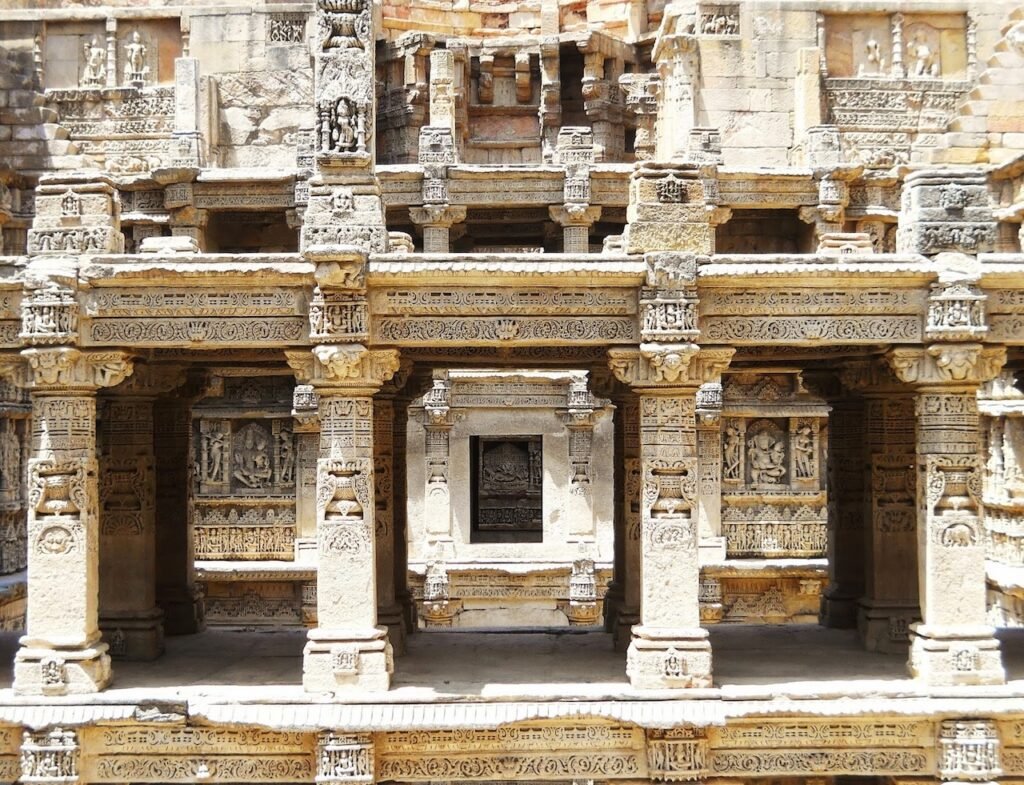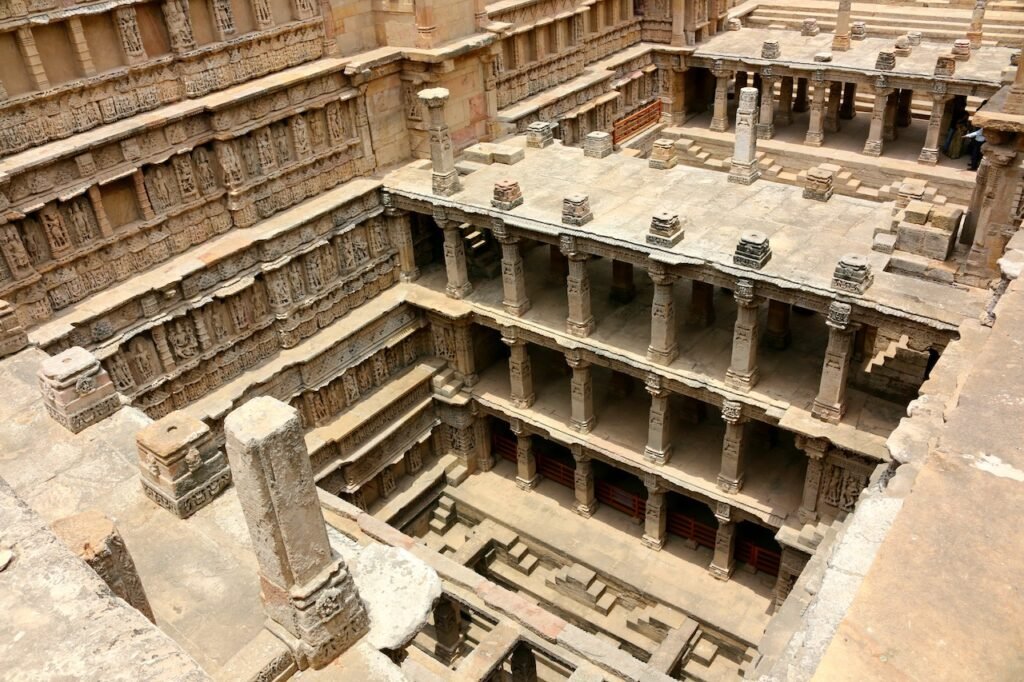Patan, Gujarat: In a significant boost to Gujarat’s tourism and cultural heritage sectors, Rani Ki Vav has shattered previous visitor records in 2025, attracting over 365,000 tourists within the first nine months of the year. The recent tourist influx, especially during the vibrant winter festival season, has generated over ₹8 lakhs in revenue in just one long weekend. Local businesses, artisans, and the renowned Patola silk industry have all reported a marked upturn, directly linked to the prominence of Rani Ki Vav as both a historical treasure and a thriving centre of art and commerce.
The stepwell, now more widely recognised after being featured on the ₹100 note and continually showcased in art and textile exhibitions, stands as a symbol of sustainable tourism and cultural preservation. Enhanced transport links and digital heritage initiatives have made it easier than ever for visitors worldwide to explore this architectural marvel. Heritage walks, expert-guided tours, and new interactive exhibits are expected to further enhance visitor engagement, promising continued prosperity for Patan and serving as inspiration for cultural conservation efforts across India.
Introduction
Rani Ki Vav, also known as the Queen’s Stepwell, is a breathtaking monument situated in Patan, Gujarat, India. Recognised as a UNESCO World Heritage Site since 2014, this architectural masterpiece stands as a remarkable symbol of the region’s artistic, cultural, and historical legacy. From its intricate sculptures to its vital role as an ancient water resource, Rani Ki Vav draws tourists and scholars alike, offering a truly immersive experience into India’s past.
The Fascinating History of Rani Ki Vav
Constructed in the 11th century by Queen Udayamati in memory of King Bhimdev I of the Chaulukya dynasty, Rani Ki Vav exemplifies the profound affection and respect a queen had for her king. Designed not just as a water reservoir but as an inverted temple, the stepwell highlights the sanctity and significance of water in Indian culture. After centuries of neglect due to floods and siltation caused by the nearby Saraswati River, the structure was rediscovered and restored by the Archaeological Survey of India in the 20th century.
Route Details and Travel Tips
- Nearest railway station: Patan Junction, just 4 km away.
- Nearest airport: Ahmedabad International Airport, about 125 km away.
- Buses are frequent from Ahmedabad, Gandhinagar, and Palanpur.
- Best visiting time: November to February for cool, pleasant weather.
Essential travel tips:
- Arrive early for the best photography light and fewer crowds.
- Guided tours are available for a deeper insight into the history and sculptures.
- Carry water, a hat, and sun protection, especially during the summer months.
Architectural Grandeur and Cultural Significance
Rani Ki Vav is celebrated for its Maru-Gurjara architectural style, adorned with more than 1,500 sculptures across its seven levels of steps. These sculptures depict Hindu deities, mostly forms of Lord Vishnu, as well as mythological scenes and intricate floral and geometric patterns. The stepwell’s design, resembling an inverted temple, blends spiritual reverence with functional utility. Its elaborate craftsmanship and labyrinthine corridors embody the height of Indian stepwell architecture and offer insight into the religious and cultural beliefs of 11th-century India.
Rani Ki Vav as a Tourist Destination
Today, Rani Ki Vav is one of Gujarat’s top tourist attractions and a pilgrimage for art, history, and architecture enthusiasts. Visitors are mesmerised by the sheer complexity and detail of the carvings, as well as the serene ambience that pervades the stepwell. The site is open all year round, with the most pleasant period for a visit being November to February when the weather is cooler. Besides its historical and architectural splendour, Rani Ki Vav also reflects the surrounding culture, especially the Patola silk weaving tradition of Patan, which shares motifs with the stepwell’s geometric designs.
Location and Route
Rani Ki Vav is situated on the banks of the Saraswati River in Patan, about 130 km from Ahmedabad, Gujarat’s largest city. The town is well-connected by road and rail, with the nearest major junction being Patan Railway Station, approximately 4 km from the stepwell. Visitors can easily arrange taxis or local transportation from Ahmedabad, Gandhinagar, or Palanpur.
Economic Impact and Tourism Revenue
Rani Ki Vav has emerged as a vital contributor to local tourism, with hundreds of thousands of visitors annually. According to recent statistics, the stepwell welcomed over 350,000 visitors in 2023 alone. During festive seasons and holidays, the site has seen up to 20,000 tourists in just four days, generating substantial revenue for the local economy. Recent reports cite earnings of over ₹8 lakhs in less than a week during peak tourist seasons. This robust flow of visitors not only benefits Patan but also helps sustain preservation efforts for the monument.
Rani Ki Vav in Modern Culture
Besides its UNESCO World Heritage status, Rani Ki Vav holds the distinction of being featured on the new ₹100 Indian currency note, a testament to its national importance. It is widely celebrated as the “Queen of Stepwells” and remains a source of pride for Gujarat and India. Various cultural festivals, art exhibitions, and textile fairs in Patan often draw inspiration from the motifs and design philosophy of the stepwell, ensuring its continued relevance in today’s cultural landscape.
Cultural Symbolism and Legacy
The sculptures and motifs of Rani Ki Vav are steeped in Hindu mythology and symbolism. Many panels depict various incarnations of Lord Vishnu, celestial dancers, and mythological scenes, echoing ancient wisdom and poetic artistry. Every stair and panel tells its own story, resonating with the pride of a bygone era. The monument serves as a lasting symbol of water conservation, love, devotion, and India’s architectural prowess.
UNESCO Recognition and Conservation Efforts
Rani Ki Vav’s addition to the UNESCO World Heritage list in 2014 bolstered both international recognition and conservation resources. Extensive documentation and digitisation initiatives by the Archaeological Survey of India and UNESCO continue to protect the site. Community awareness programs further help maintain the balance between tourism and preservation.

Unique Festivals and Traditions
Beyond its historical significance, Rani Ki Vav has become central to local celebrations and art fairs. Events highlighting traditional dances, music, and crafts often echo the themes engraved in the stepwell. The motifs here inspire local Patola sari makers—handwoven textiles renowned across India—blending ancient art with living traditions.
Economic and Cultural Benefits
The revival and promotion of Rani Ki Vav have significantly boosted Patan’s economy through tourism and associated hospitality services. Annual festivals and heritage walks further enrich the visitor experience while reviving interest among locals and young people in India’s glorious past. These efforts have spurred improvements in infrastructure and the well-being of local communities that depend on tourism revenue.
FAQs about Rani Ki Vav
Why is Rani Ki Vav so famous?
Rani Ki Vav is renowned for its intricate architectural design, exquisite sculptures, and UNESCO World Heritage status. It stands as one of the best-preserved and most beautiful stepwells in India, celebrating both engineering ingenuity and spiritual artistry.
Who built Rani Ki Vav and why?
It was commissioned by Queen Udayamati in the 11th century in memory of her husband, King Bhimdev I, serving both as a memorial and a functional water reservoir during the Chaulukya dynasty’s reign.
What makes Rani Ki Vav architecturally unique?
Its inverted temple design, seven levels of sculpted panels, and over 1,500 detailed statues, including more than 500 principal images, mostly of Vishnu, distinguish it from other ancient stepwells.
How can tourists reach Rani Ki Vav?
Rani Ki Vav is easily accessible by road and rail from Ahmedabad and other major cities in Gujarat. Patan rail junction is the closest station, with local transport options widely available.
What are the visiting hours and entry fees?
The site is open year-round. Visiting hours usually run from sunrise to sunset, and entry fees are moderate, with separate rates for Indian and foreign visitors. Always check the latest local guidelines before planning a visit.
What has been its recent impact on tourism?
Tourism at Rani Ki Vav is thriving, with hundreds of thousands of visitors annually and significant local revenue generation, over ₹8 lakhs in just four days during major holiday periods.
How is Rani Ki Vav maintained today?
The Archaeological Survey of India manages the site, ensuring regular conservation, restoration, and visitor safety measures, particularly following its inscription as a UNESCO World Heritage Site.
Are there other attractions nearby?
Yes, Patan is also known for the Patola silk weaving museum, the Sahastralinga Tank, and historic Jain temples, making it an ideal day trip destination.
